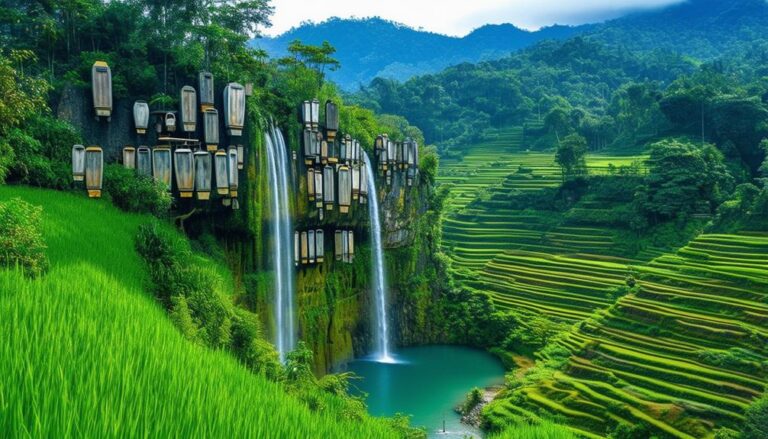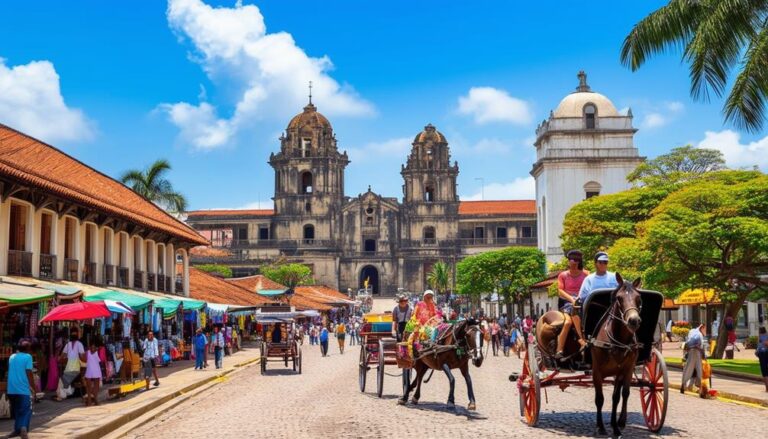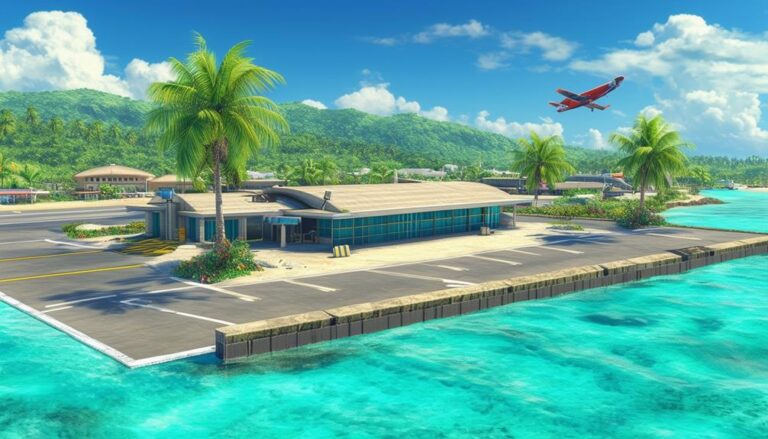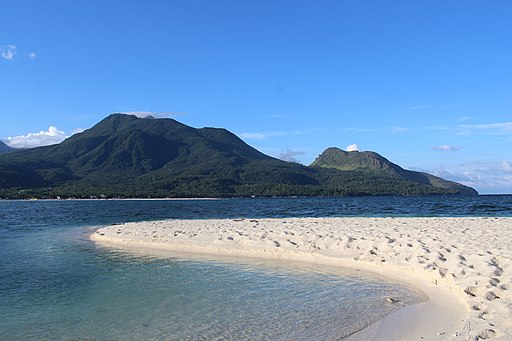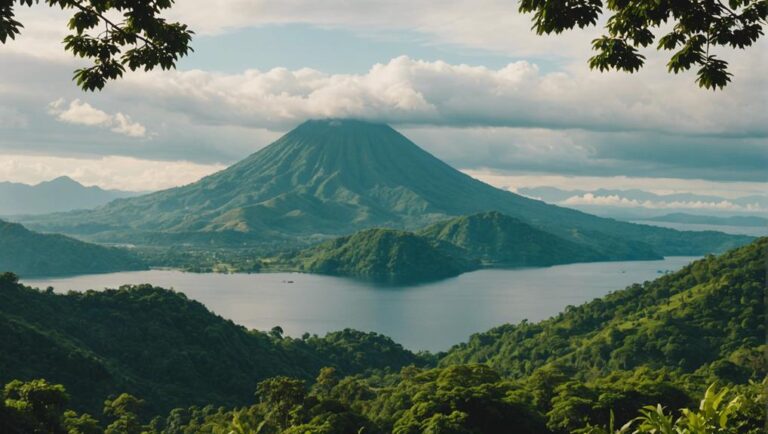Banaue Rice Terraces Philippines
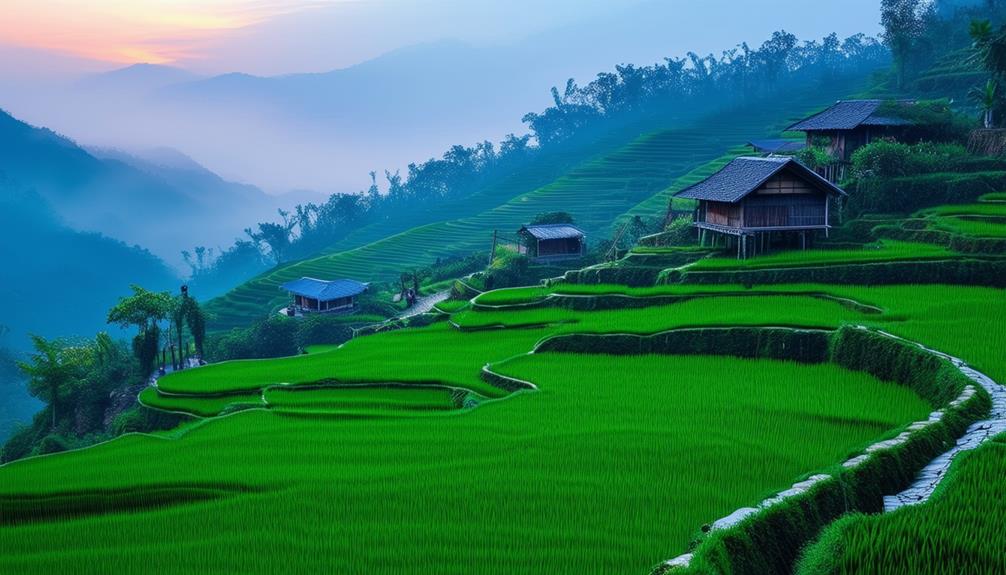
The Banaue Rice Terraces in the Philippines is a 2,000-year-old demonstration of the Ifugao people‘s ingenuity and harmony with nature. These magnificent terraces, carved into the mountains, showcase ancient agricultural engineering and a deep connection between the Ifugao people and the environment.
As you explore the terraces, you’ll discover a delicate balance between conservation and sustainability. You’ll learn about the Ifugao people’s traditional farming methods, tied to lunar cycles and rituals, and how sustainable tourism practices are critical for preservation. As you venture deeper into this cultural treasure, you’ll find there’s much more to harvest.
Key Takeaways
• The Banaue Rice Terraces, a UNESCO World Heritage Site, showcase ancient agricultural engineering and are central to the Ifugao people’s culture and survival.
• The terraces have been free from genetically modified organisms since 2009, thanks to eco-friendly collaborations with organizations like Greenpeace.
• The best time to visit is in June during harvest season, when you can explore the terraces, take in stunning views, and join guided tours with local guides.
• The site was removed from the endangered list in 2012, but still faces conservation challenges, making sustainable tourism practices critical for preservation.
• By visiting, you can contribute to conservation efforts and witness the ingenuity of the Ifugao people, while participating in traditional farming activities and local experiences.
Cultural and Historical Significance
As you explore the rich cultural heritage of the Banaue Rice Terraces, you’ll uncover the intricate story of an ancient civilization that has thrived in harmony with nature for over 2,000 years. The Ifugao people‘s traditional farming methods, tied to lunar cycles and rituals, have been the backbone of their cultural and historical significance. These magnificent terraces, hand-carved into the mountainsides, represent a delicate balance between nature and human activity, showcasing the mastery of ancient agricultural engineering.
Celebrated for their cultural and historical significance, the Banaue Rice Terraces are central to the survival and culture of the Ifugao people. They’re a demonstration of the community’s ingenuity and resourcefulness, showing their ability to live in harmony with the environment.
Listed as National Cultural Treasures, the terraces have faced conservation challenges, including a decline in younger generations working the fields and threats from abandonment of terraces and irrigation systems.
Despite these challenges, preservation efforts have been instrumental in safeguarding the terraces. Today, sustainable tourism plays an essential role in protecting this cultural and ecological treasure for future generations.
As you explore the Banaue Rice Terraces, you’ll experience the rich cultural heritage of the Ifugao people and witness the importance of conservation efforts in preserving this ancient civilization.
Sustainable Farming Practices
Stepping into the Banaue Rice Terraces, you’re immediately immersed in a world of sustainable farming practices, where the air is fresh, the landscape is breathtaking, and the commitment to eco-friendly agriculture is palpable.
Here, you’ll discover:
- GMO-free farming: Since 2009, the terraces have been free from genetically modified organisms, ensuring the preservation of organic farming practices.
- Eco-friendly collaborations: Partnerships with organizations like Greenpeace and the Miss Earth Foundation have supported sustainable agriculture efforts, solidifying the terraces’ commitment to environmental integrity.
- Government support: Local and municipal governments have played an essential role in maintaining the organic status of the terraces, ensuring the continued preservation of this cultural and ecological treasure.
- Environmental awareness: Events at Dianara Viewpoint highlight the importance of eco-friendly agriculture, promoting environmentally conscious and sustainable farming initiatives.
Planning Your Visit
With daily buses leaving from Manila and winding their way through mountainous terrain, you can embark on an 8- to 10-hour journey to reach the breathtaking Banaue Rice Terraces. As you approach the Philippines’ iconic World Heritage site, the scenic vistas of emerald hillsides and ancient rice paddies will leave you in awe.
To make the most of your visit, plan ahead and consider the best time to visit, which is in June during the harvest season, when the landscapes turn golden. You can choose to explore into the terraces, immersing yourself in the rich culture and history of the Ifugao people, or simply take in the stunning views from the hillsides.
To explore more deeply into the history and significance of the terraces, consider joining a guided tour with a local guide from Banaue. They’ll share insights into the traditional farming practices, tied to lunar cycles, and the conservation efforts that have protected this cultural and ecological treasure.
Conservation and Sustainability
Beyond the majestic vistas and ancient farming practices, the Banaue Rice Terraces‘ very existence depends on a delicate balance between conservation and sustainability, where every visitor plays an essential role in preserving this cultural and ecological treasure.
The UNESCO World Heritage Site‘s removal from the endangered list in 2012 is a demonstration to successful restoration and conservation efforts.
However, the abandonment of terraces and irrigation systems remains a threat, making sustainable tourism practices critical in balancing conservation with economic development.
Imagine yourself surrounded by:
- Lush green rice paddies carved into the mountainsides, a proof to the Ifugao people’s harmony with nature
- Ancient irrigation systems that have been meticulously maintained for centuries, a true engineering marvel
- Traditional farming practices tied to lunar cycles, a cultural heritage that’s been passed down for generations
- The stunning vistas of the Philippine Cordillera Mountains, a breathtaking backdrop to this cultural landscape of unparalleled beauty
Local Experiences and Activities
As you explore the heart of the Banaue Rice Terraces, you’re invited to participate in a rich fabric of local experiences and activities that interlace tradition, culture, and adventure.
| Experience | Description | Season |
|---|---|---|
| Traditional Farming | Learn about Ifugao rice farming methods, planting rice, and understanding lunar cycles. | Planting Season |
| Cultural Immersion | Witness Ifugao rituals and celebrations tied to agricultural rites during harvest time. | Harvest Season |
| Guided Tours | Explore the terraces with local guides, like Jercy Cabbigat, for insights into history and significance. | Year-Round |
| Trekking and Hiking | Discover varying levels of difficulty, from leisurely strolls to challenging climbs. | Year-Round |
| Agricultural Rituals | Participate in traditional farming activities, tied to lunar cycles and harvest seasons. | Planting and Harvest Seasons |
You can engage in cultural immersion experiences, witnessing Ifugao rituals and celebrations tied to agricultural rites during the harvest season. Take guided tours led by locals, who provide insights into the history and significance of the area. Enjoy trekking and hiking opportunities through the terraces, with varying levels of difficulty to cater to different preferences. Witness the terraces change colors throughout the year, with vibrant greens during the planting season and golden landscapes during harvest time.
Frequently Asked Questions
What Is Special About Banaue Rice Terraces?
As you explore the world’s most incredible feats, you’ll discover that this ancient wonder stands out for its 2,000-year-old sustainable farming practices, meticulously carved into mountainsides, showcasing a people’s deep connection with nature.
Is Banaue Rice Terraces 7 Wonders of the World?
You might wonder if a place is one of the New7Wonders of the World, but the answer is no, it didn’t make the final list, despite its cultural and historical significance, but it remains a stunning UNESCO World Heritage site.
How Many Hours From Manila to Banaue Rice Terraces?
You’ll start on a scenic bus ride from Manila, winding through mountainous terrain for around 8 to 10 hours, giving you a glimpse into the region’s stunning landscapes before reaching your destination.
When to Visit Banaue Rice Terraces?
When planning your trip, you’ll want to time it just right – visit during the dry season for crystal-clear views, or in June for a golden harvest landscape, avoiding summer and fall’s cloudy skies.
Conclusion
The Banaue Rice Terraces is an awe-inspiring feat of ancient agricultural engineering that showcases the harmonious relationship between the Ifugao people and nature.
As a UNESCO World Heritage site, visiting the terraces allows you to contribute to vital conservation efforts while experiencing the rich cultural heritage and sustainable farming practices of this 2,000-year-old living monument.
With ingenious irrigation systems, unique traditional rituals make the Banaue Rice Terraces one of the most beautiful and a must-visit destination in the Philippines.

